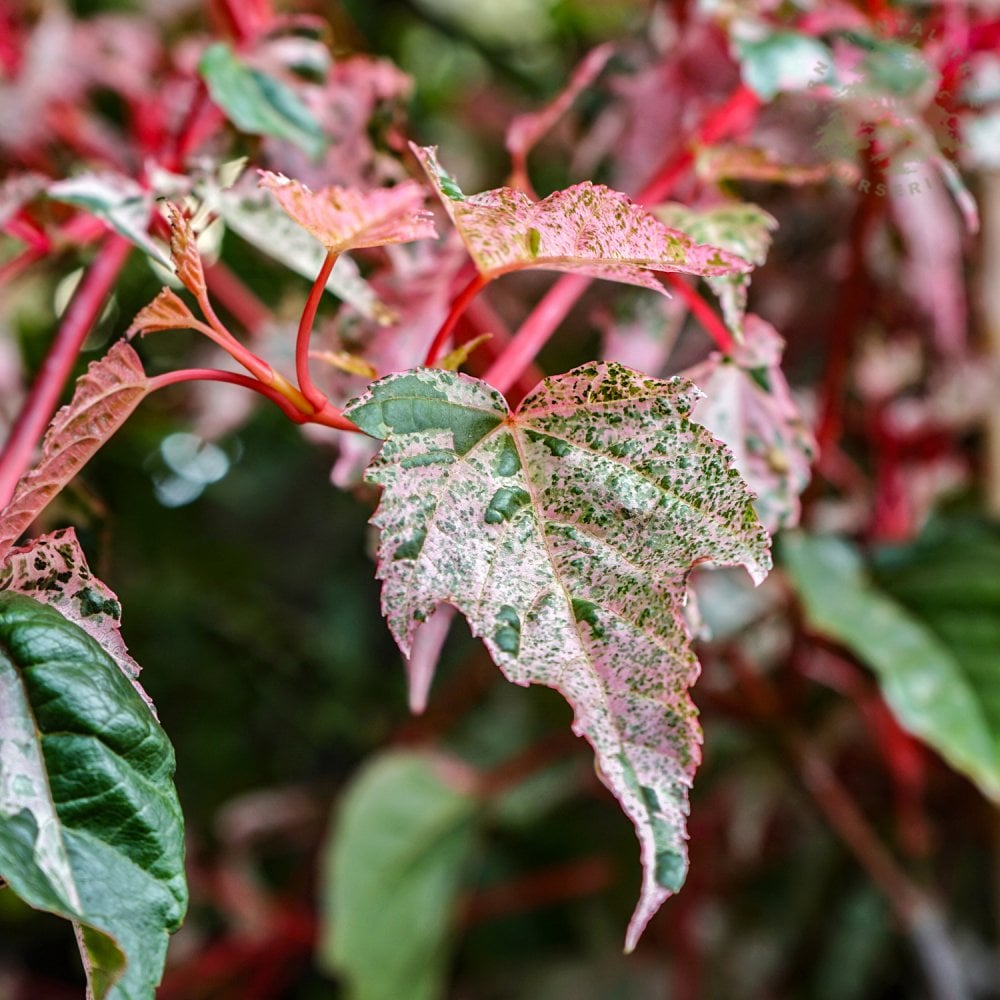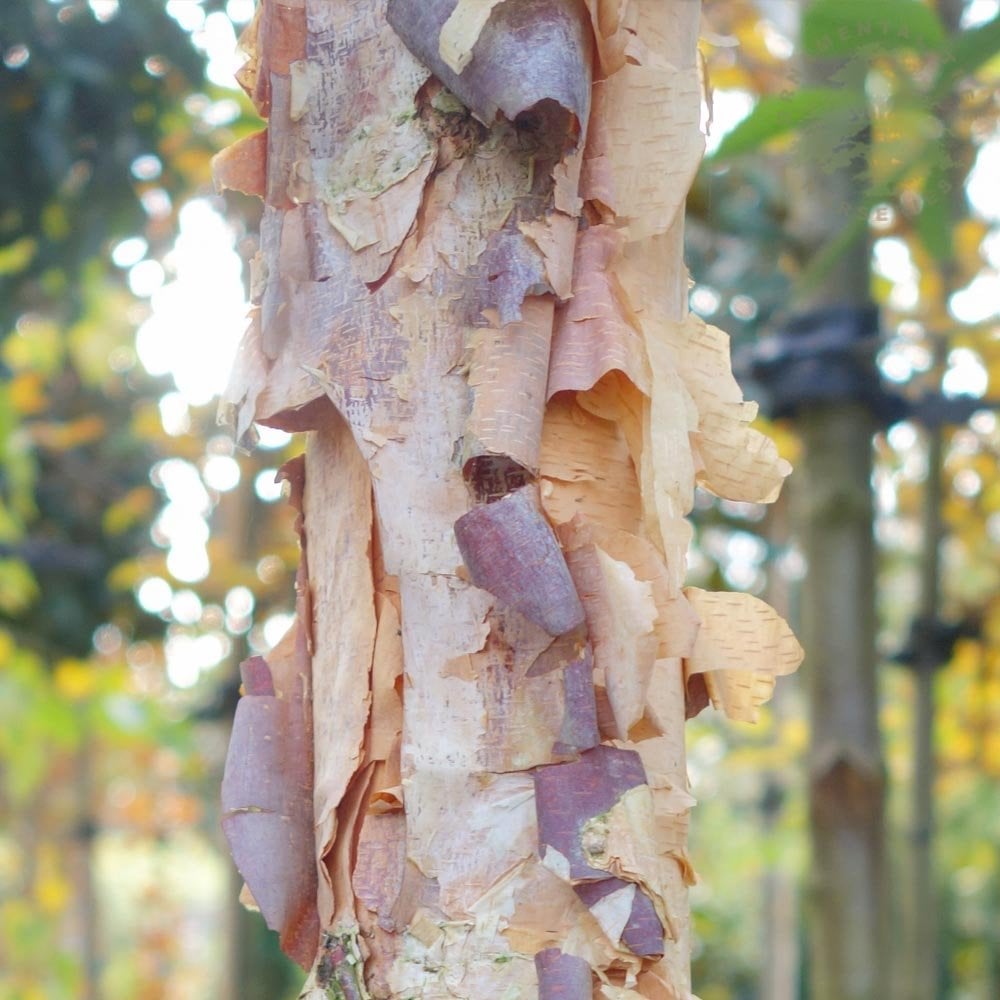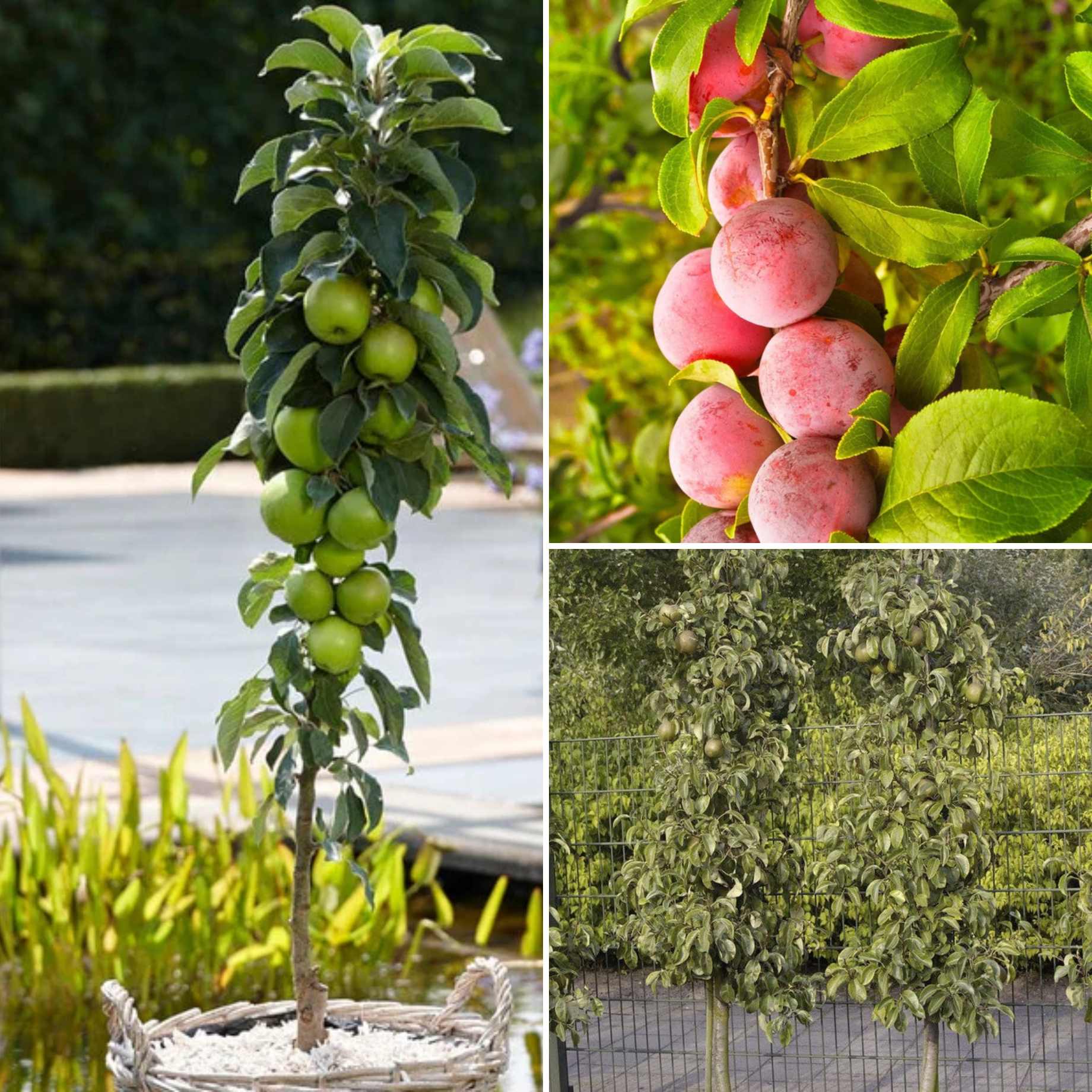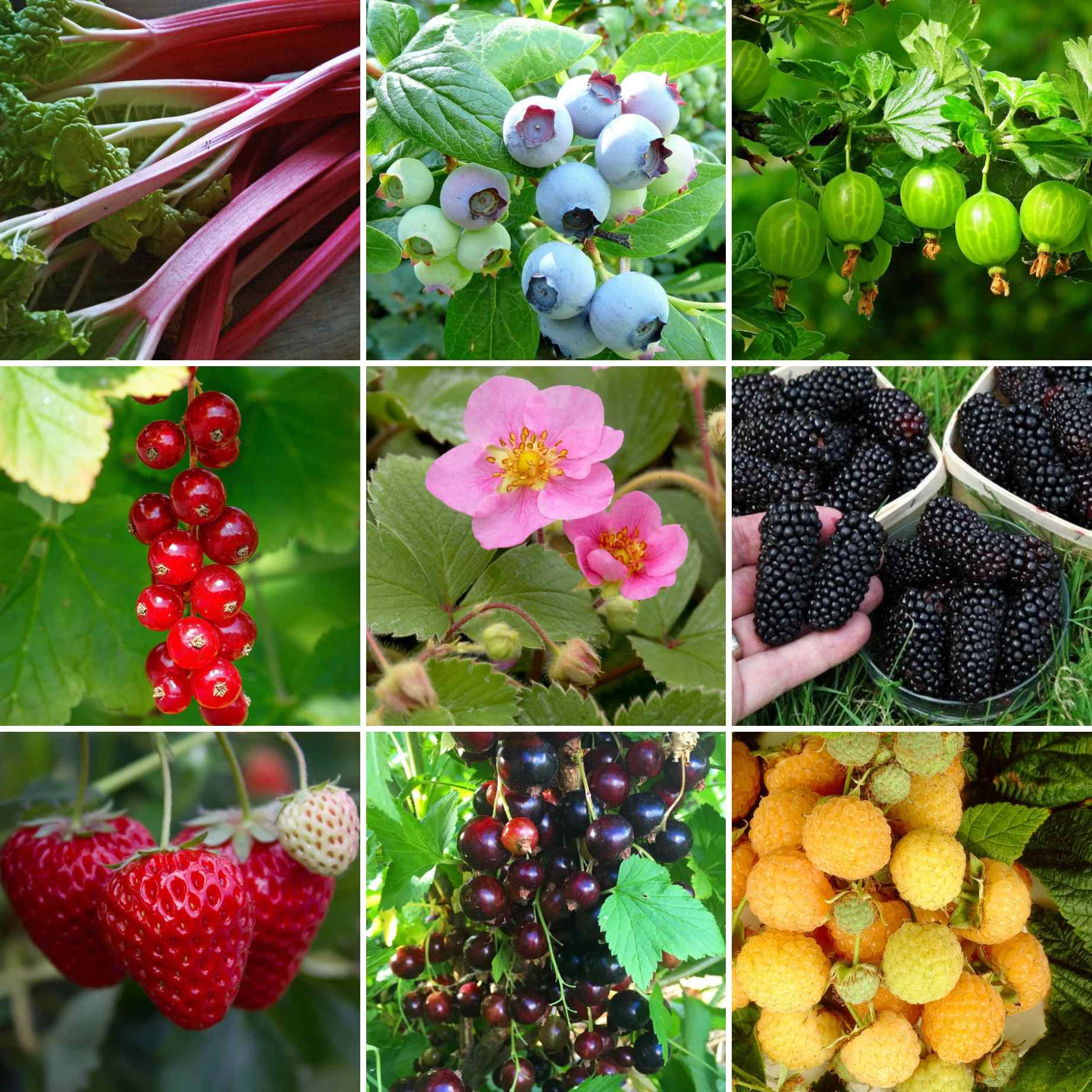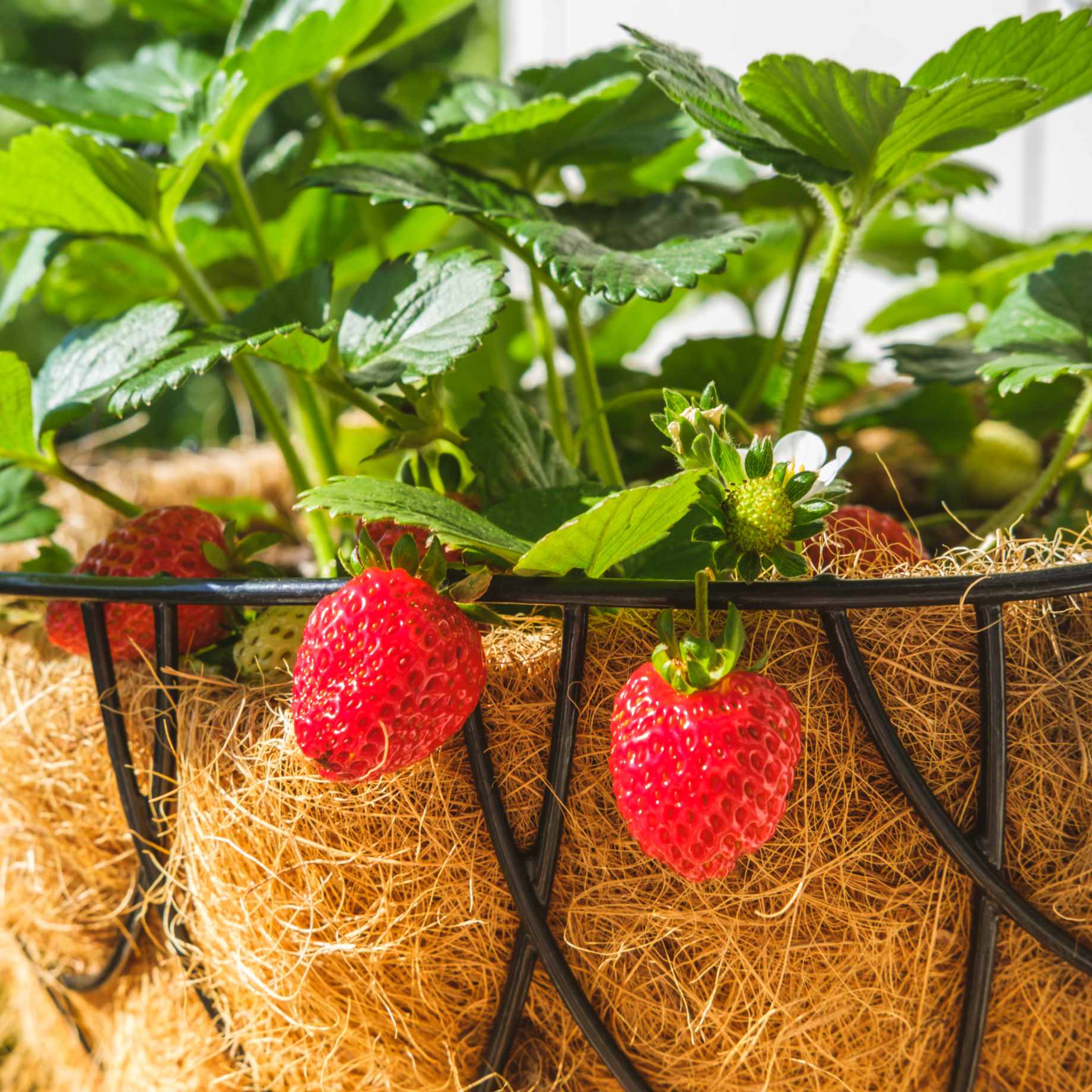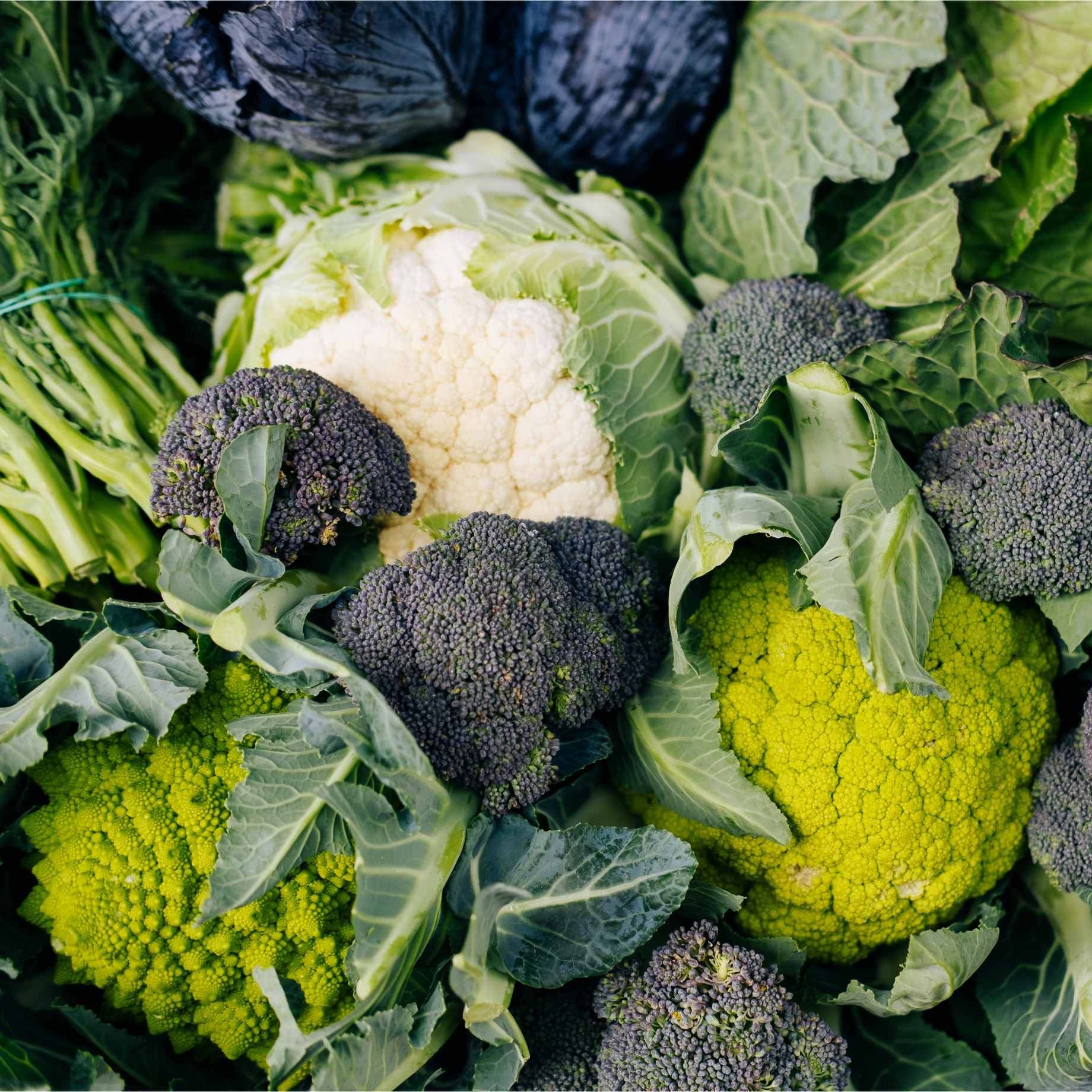Key features
Final size8 x 4 metres in 20 years
FoliageGreen leaves turn yellow in autumn (deciduous)
BarkPeeling, multi-coloured bark
SoilWet-tolerant
Description
This spectacular River Birch is, in our opinion, a tree rivalled in its suitability for wet sites only by Alders and Willows. The shaggy, ruffled bark displays an array of colours and makes for brilliant year round interest. Creamy-grey and cinnamon brown base tones are highlighted with hints of pinky-orange, purple and gold.
Betula nigra ‘Heritage’ also has pretty, diamond shaped green leaves that turn golden in autumn. The statuesque form will look stunning planted in a group or individually as a specimen tree. In its single stem form, ‘Heritage’ a height and spread of 8 x 4 metres can be expected in 20 years.
Tolerant of all soil types, Betula nigra ‘Heritage’ copes with clay, chalk and wet conditions, plus once established it will also thrive in less moist conditions. This beautiful River Birch tree would make a wonderfully tactile addition to any garden all year round.
AKA River birch, Red birch, Black birch, Betula nigra ‘Cully’
Planting Steps
1Preparation
- Pot-grown plants can be planted at any time of year, whereas bare roots need to be planted between November and March.
- Clear weeds and grass within a metre of the planting hole.
- Dig a hole as deep as the root mass and twice as wide.
- To help your plant establish more effectively, sprinkle Rootgrow in the hole.
2Planting
- Gently loosen the roots and place into the planting hole.
- Ensure the top of the plant’s compost is flush with the level of the surrounding soil and the graft union or collar of the tree is above ground level.
- Mix 50% of the original soil with 50% compost.
- Fill in the hole, firming the soil gently.
3Last Steps
- Water generously around the base of the plant.
- If you are planting either a single stem tree or mature standard tree, we recommend adding a staking kit and rabbit guard.
Aftercare Advice
Birch trees require a good watering regime for a couple of years whilst they establish. Water well and regularly through spring and summer, increasing in hot or dry weather. If planting in autumn, you may only need to water a little. Unlike many species, Birch prefer wet soil than dry. It is advisable to keep the area free of competing weeds and grass during this period.
Established Birch trees require minimal pruning and do not take well to hard pruning, as this increases light at the base of the tree, which in turn increases soil temperature and decreases moisture levels. Simply remove lateral shoots to maintain a clear trunk and prune any diseased or damaged branches. Pruning should be carried out in late summer to mid-winter. Birch trees bleed heavily at other times of the year, especially late winter.
Tip: to keep the colourful bark looking its best, you can wash it using water and a sponge.
For more detailed advice and video guides, please visit our Help & Advice section.


